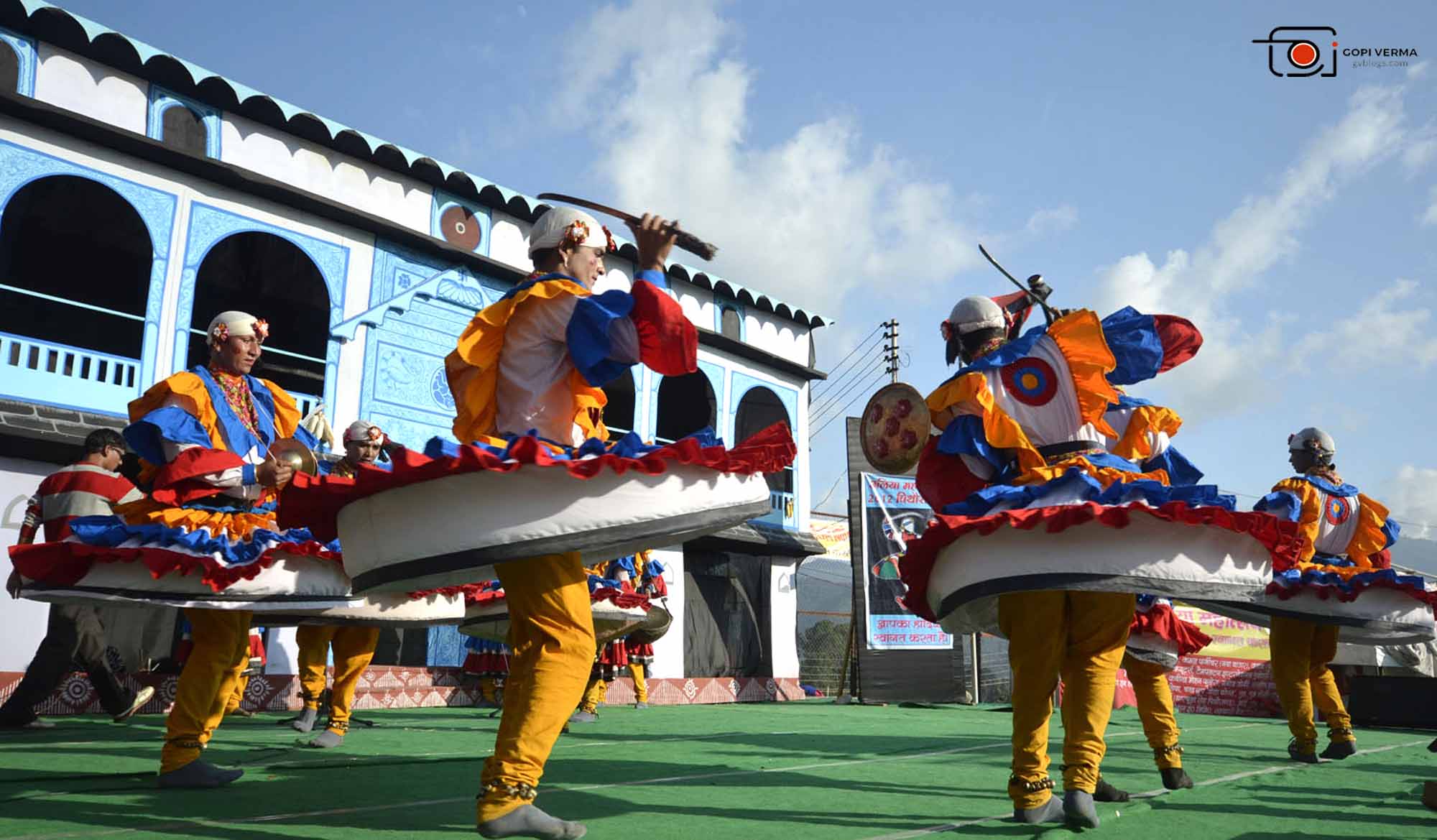Uttarakhand, a northern state of India, is known for its vibrant culture, rich heritage, and fascinating folk dances. One of the most famous folk dances of the Uttarakhand’s Kumaon region is the Choliya Dance.

Choliya or Hudkeli is a traditional folk dance that originated in the Kumaon division of the Indian state of Uttarakhand and in some parts of Nepal. Over time, it has become a symbol of Kumaoni and Nepali cultures and is now performed on many auspicious occasions, although it was originally performed as a sword dance accompanying a marriage procession. The dance is particularly popular in the districts of Almora, Bageshwar, Champawat, and Pithoragarh in the Kumaon division of Uttarakhand, as well as in the Doti, Baitadi, and Darchula districts of Nepal. With a history of over a thousand years, Chholiya is deeply rooted in the martial traditions of the Kumaoni people and Khas people.
The origins of a dance form dating back over a thousand years can be traced back to the warring Kshatriyas of Kumaon, namely the Khasas and Katyuris, who performed marriages at the point of swords.

Choliya, an art form with origins in the martial traditions of the Kumaon people, holds religious significance as well. Choliya performances are considered auspicious because they are believed to provide protection against malevolent spirits. It was a common belief that evil spirits would target the happiness of the people who attended the wedding procession or Barat. These spirits would try to bewitch the newlywed couple, but performing Choliya could prevent this.
Wearing the customary dress of Kumaon, which includes white churidar payajama, a taanka on their heads, a chola, and faces covered in sandalwood paste, the performers appear battle-ready with their tulwar swords and brass shields. The attire of the performers resembles the dress of the historic martial warriors who once resided in Kumaon.
The Chholiya dancers move in unison to the beat of the war-like music, brandishing their swords in mock battles with their fellow performers. As they carry the red, triangular “nishana” banners and wave their swords with intense facial expressions, they embody the image of warriors marching into battle.
A complete troupe of Chholiya dancers typically consists of 22 men, of which 8 are sword dancers and 14 are musicians.

Instruments
The brass instruments of turi, nagphani, and ransing are traditional instruments of the Kumaon region, which were previously employed in battles to boost the soldiers’ morale, are used.
In addition to these, percussion instruments like the dhol and damau are also widely played by professional musicians called dholies. The masakbeen or bagpipe was introduced by the British and is now a part of the diverse range of instruments played in Kumaun.
Moreover, woodwind instruments such as the nausuriya muruli or the nine-note flute, and jyonya or the twin flute, a type of double flute native to Kumaon, are also played by the locals.

Choliya Dance is a vibrant and celebratory folk dance that is an essential part of the cultural heritage of Uttarakhand. Its colorful costumes, lively music, and synchronized movements make it a joy to watch, and its significance and cultural importance make it a cherished tradition of the region. While it faces several challenges, the dance continues to thrive and evolve, bringing joy and celebration to people around the world.

